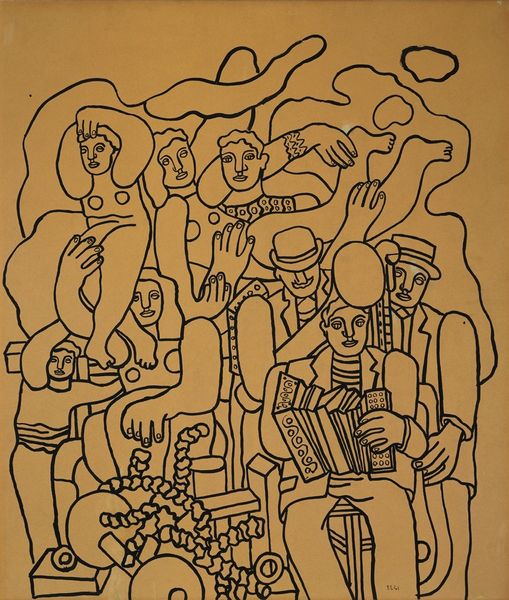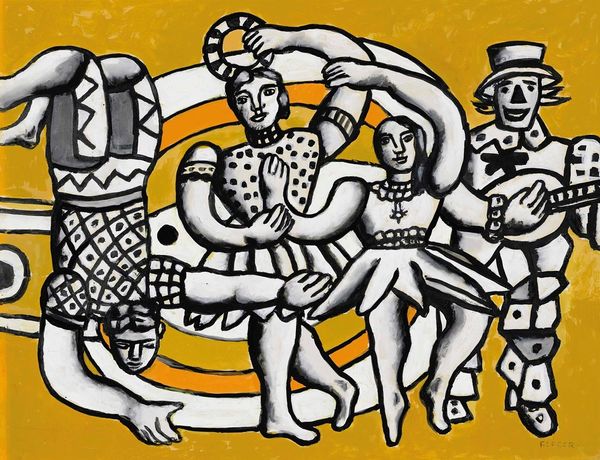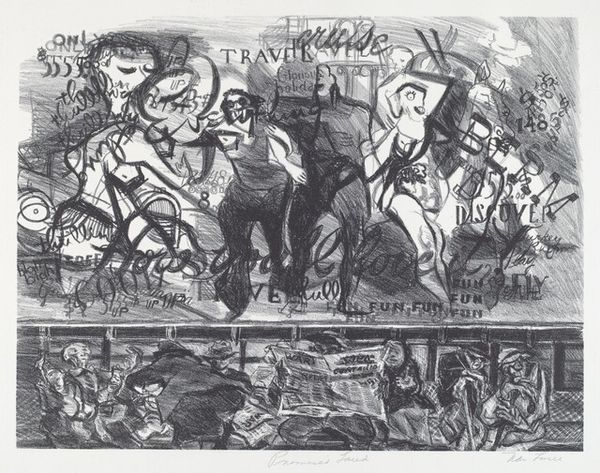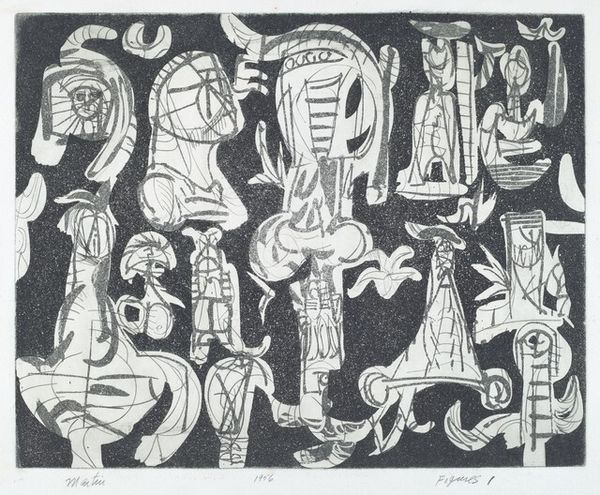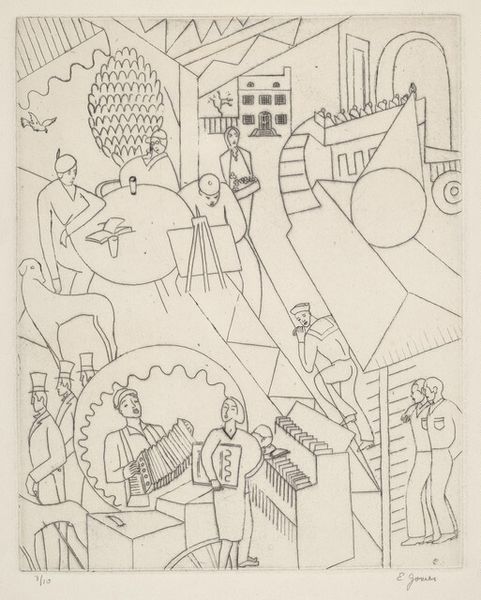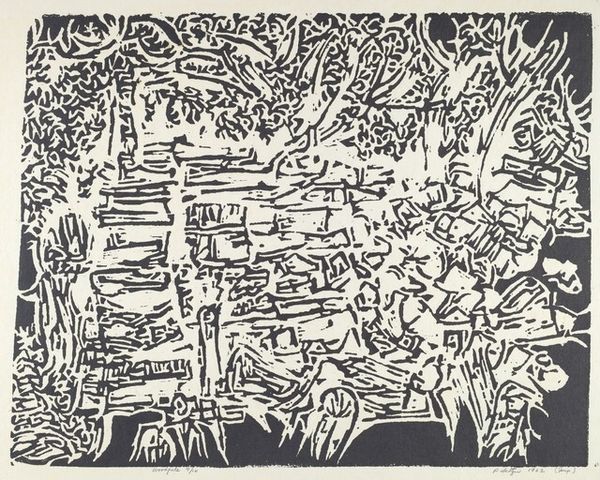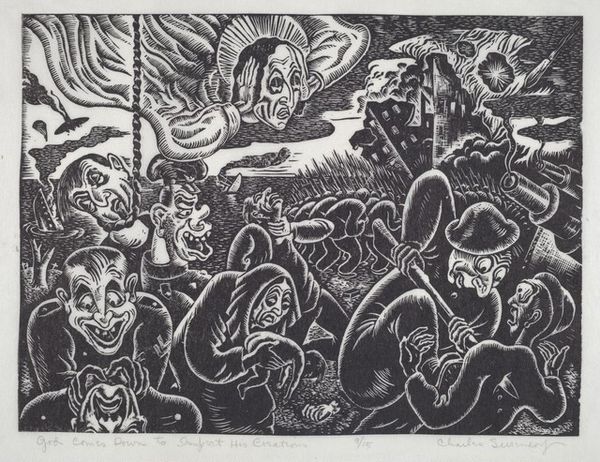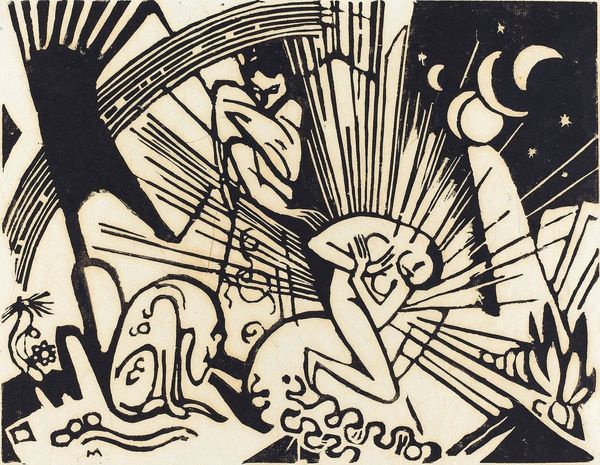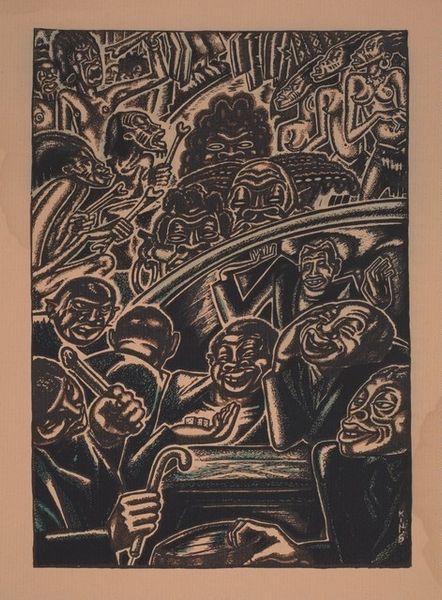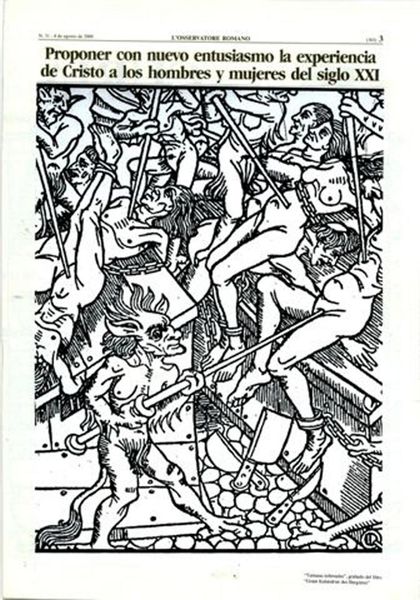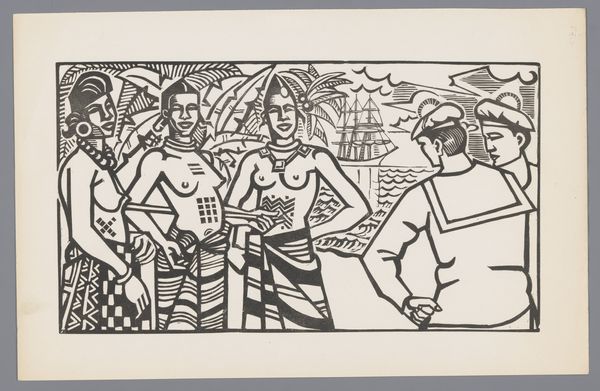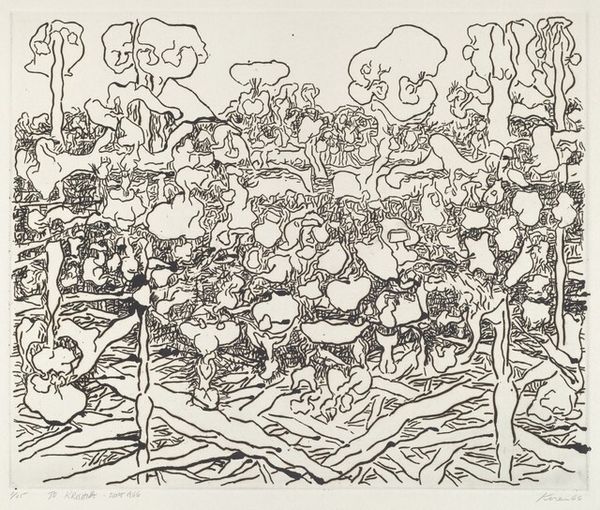
drawing, acrylic-paint
#
drawing
#
cubism
#
acrylic-paint
#
figuration
#
modernism
Copyright: Modern Artists: Artvee
Editor: This is Fernand Léger’s “Etude pour La Grande Parade,” created in 1952 with acrylic paint. The bold black lines against the white background create such a strong sense of playful energy! It’s a really intriguing piece. What strikes you most about it? Curator: Indeed. Note how Léger articulates form here: he has carefully balanced flat shapes and bold lines to suggest volume, yet consistently avoids illusionistic depth. He emphasizes the flatness of the picture plane. Consider the relationship between figure and ground. The positive and negative spaces are equally assertive, creating a visual tension that keeps the eye in constant motion. Editor: That’s fascinating! I hadn't thought about it in terms of positive and negative space. Are you saying that it’s almost like the white background is just as important as the black lines outlining the figures? Curator: Precisely! Léger intentionally thwarts traditional perspective by giving equal visual weight to the forms and their surrounding space. The forms are stylized and reduced to their essential components, negating individual characteristics for universal appeal. What happens if he had introduced color? Editor: I see your point. By limiting the color palette, Léger really highlights the composition. The abstraction and simplification create a visual rhythm that's hard to ignore. If color was added, the balance between shapes and tones might be diminished, don't you think? Curator: Exactly. Editor: Thanks, seeing it this way has completely transformed my understanding! Curator: I agree. It allows a deeper understanding of the forms beyond their initial figurative appearance.
Comments
No comments
Be the first to comment and join the conversation on the ultimate creative platform.
